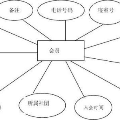It is well known [Lov\'asz, 67] that up to isomorphism a graph~$G$ is determined by the homomorphism counts $\hom(F, G)$, i.e., the number of homomorphisms from $F$ to $G$, where $F$ ranges over all graphs. Thus, in principle, we can answer any query concerning $G$ with only accessing the $\hom(\cdot,G)$'s instead of $G$ itself. In this paper, we deal with queries for which there is a hom algorithm, i.e., there are finitely many graphs $F_1, \ldots, F_k$ such that for any graph $G$ whether it is a Yes-instance of the query is already determined by the vector\[\overrightarrow{\hom}_{F_1,\ldots,F_k}(G):= \big(\hom(F_1,G),\ldots,\hom(F_k,G)\big),\]where the graphs $F_1, \ldots, F_k$ only depend on $\varphi$. We observe that planarity of graphs and 3-colorability of graphs, properties expressible in monadic second-order logic, have no hom algorithm. On the other hand, queries expressible as a Boolean combination of universal sentences in first-order logic FO have a hom algorithm. Even though it is not easy to find FO definable queries without a hom algorithm, we succeed to show this for the non-existence of an isolated vertex, a property expressible by the FO sentence $\forall x\exists y Exy$, somehow the ``simplest'' graph property not definable by a Boolean combination of universal sentences.These results provide a characterization of the prefix classes of first-order logic with the property that each query definable by a sentence of the prefix class has a hom algorithm. For adaptive query algorithms, i.e., algorithms that again access $\overrightarrow{\hom}_{F_1,\ldots,F_k}(G)$ but here $F_{i+1}$ might depend on $\hom(F_1,G),\ldots,\hom(F_i,G)$, we show that three homomorphism counts $\hom(\cdot,G)$ are both sufficient and in general necessary to determine the isomorphism type of $G$.
翻译:众所周知 [Lovász, 67],在同构意义下,一个图 $G$ 可以由同态计数 $\hom(F,G)$ 确定,即 $F$ 为所有图时从 $F$ 到 $G$ 的同态数量,因此,原则上我们可以通过仅访问 $\hom(\cdot,G)$ 而不是 $G$ 本身来回答关于 $G$ 的任何查询。在本文中,我们研究了存在 hom 算法的查询,即有有限个图 $F_1,\ldots,F_k$,使得对于任何图 $G$,它是否是查询的 Yes-实例已经由向量\[\overrightarrow{\hom}_{F_1,\ldots,F_k}(G):= \big(\hom(F_1,G),\ldots,\hom(F_k,G)\big)\]决定,其中 $F_1,\ldots,F_k$ 仅取决于 $\varphi$。我们观察到,图的平面性和图的 $3$-可染性,即可在单调二阶逻辑中表达的属性,没有 hom 算法。另一方面,在一阶逻辑 FO 中通用句子的布尔组合可具有 hom 算法。尽管很难找到没有 hom 算法的 FO 可定义的查询,但我们成功地展示了不存在孤立点,由 FO 句子 $\forall x\exists y Exy$ 可表达,是不能由通用句子的布尔组合定义的“最简单”的图形属性。这些结果提供了一种前缀类的特征,其中每个通过前缀类句子定义的查询都有一个 hom 算法。对于自适应查询算法,即再次访问 $\overrightarrow{\hom}_{F_1,\ldots,F_k}(G)$ 但这里 $F_{i+1}$ 可能取决于 $\hom(F_1,G),\ldots,\hom(F_i,G)$,我们显示三个同态计数 $\hom(\cdot,G)$ 既足够又普遍地需要确定 $G$ 的同构类型。


